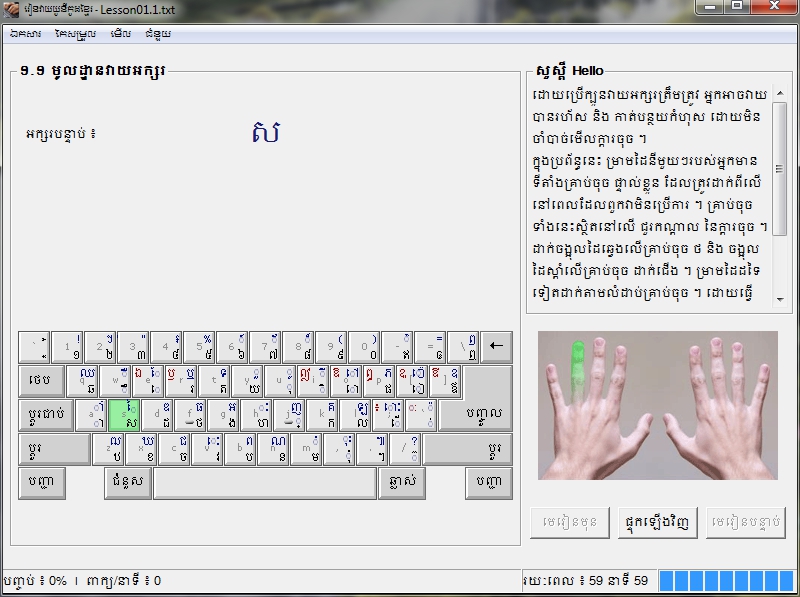On This Page
Introduction

This document provides instructions for setting up the programming environment we use in CS-11 on the Macintosh computer running OS-X version 10.9 or later. For OS-X 10.8 or earlier see the instructions here. We use the free developer tools supplied by Apple Computer.
Installing g++

- Open a Terminal window.
Press ⌘ Command+Space, type Terminal in the search field, and press the Return key.
- In the Terminal window type
g++and press the Return key. We will see an alert box like this: - Choose Install to get only the command line tools unless you want to learn Xcode.
Xcode can be installed later from the App Store.
- After installation, type
g++in the Terminal, press the Return key, and verify the terminal prints the message, 'no input files'. - After installation, set your computer to show file extensions in Finder.
As an optional step, register (for free) on the Apple Developer Connection as a basic developer. This gives you access to additional software and articles as well as older versions of Xcode.
Setting Up TextEdit
To save code we need to use a plain text editor like TextEdit. However, we need to set up TextEdit to save files using plain text and not in rich-text format (RTF). Our programs will not compile unless we use plain text. These instructions setup TextEdit to make programming easier.
How to Install GCC on Mac. It is very easy to install GCC 4.8.1 on a Mac if you have Mac Ports installed. Here are the steps to set everything up: 1. Go to MacPorts and install it by downloading the DMG and installing it. Make sure you pick the right version based on your operating system version. Open your Mac Terminal ( Applications. OSX GCC Installer Downloading and installing the massive Xcode installer is a huge hassle if you just want GCC and related tools. The osx-gcc-installer allows you to install the essential compilers from either pre-built binary packages or helps you create your own installer. How to install the gcc compiler on a mac. Project Development Help and Advice. May 23, 2020, 5:30am #1. Hi, I was just wondering, I have been learning c on a mac and I have no way to compile my code. I need to know how to install gcc on my MacBook.
- Open TextEdit.
Press ⌘ Command+Space, type TextEdit in the search field, and press the Return key.
- From the TextEdit menu, select Preferences. We will see a dialog box like this:
- In the Prefences dialog:
- Select Plain text.
- Set Window Size Width to 80 characters.
- Uncheck both Smart quotes and Smart dashes.

To jump to a specific line in an open document, press ⌘ Command+L to bring up the Select Line tool. Enter the line number and press the Return key.
Installing TextWrangler
Even though we can use TextEdit for developing program source code, other editors like TextWrangler are more convenient because we can see line numbers more easily. When we compile code, all errors are reported by line number. Easily viewing line numbers speeds up the program development process. These instructions describe how to install and set up TextWrangler.
- Start the App Store application on your Mac computer.
- Apple logo -> App Store...
- In the App Store, search for TextWrangler and select it from the search list.
- Press the Get button and wait for the installation to complete.
- In the App Store, press the Open button.
- In TextWrangler, open the Preferences dialog.
- In the Editor Defaults panel, check the box to Auto-expand tabs.
- In the Text Files panel, check the box to Ensure file ends with line break.
To start TextWrangler after installation, press the ⌘ Command+Space, type TextWrangler in the search field, and press the Return key.
Compiling and Running Programs
Gcc Compiler Mac
Use this source code to test that your installation can compile and run programs.
Mac Update Gcc
- Copy the above program into a text editor and save the file as
hello.cppon your Desktop. - Open a Terminal window and type
cd Desktopfollwed by the Return key to change directories (cd) to the Desktop: - To compile, enter the following in the Terminal window follwed by the Return key:
We see the file
helloappear on the desktop under an exec icon. - Run the compiled program by typing the following in the Terminal window followed by the Return key:
